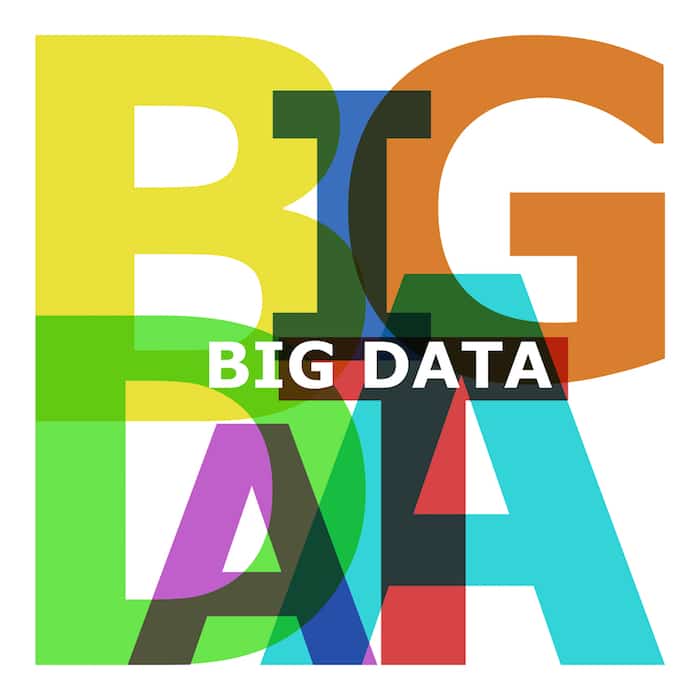Software across the Physical Security Industry is fragmented and this makes joined up solutions expensive and difficult to justify on the basis of ROI. The introduction of IoT & Big Data would enable a much more effective solution both improving the quality of security and add on services.
Software in the Physical Security Business has for the most part been built separately around the 3 major segments of the business (Video Surveillance, Access Control, Intruder Alarms) and then further broken down into packages to manage and control the various components.
More recently to bring together data from these packages, more comprehensive software has been introduced, providing complex analysis and control and thus delivering better and more actionable information.

However it has taken the 3 integration packages PSIM (Physical Security Information Management) and PIAM (Physical Identity Access Management) and Situational Awareness Platforms (SAP) a lot longer to get established. The main reason for this is the cost of joining the disparate devices together on existing installations. The latent demand is there but the ROI seems not yet sufficient to fully exploit it.
The concept of the IoT is gathering momentum in the built environment and its introduction will simplify the incorporation of PSIM, PIAM and SAP functionality within the Big Data and analytics package.
This will simplify the management of data and provide much richer analytics and actionable feedback instructions, realizing more timely customer value propositions. Whilst this will disrupt the way that these software services are delivered today the demand for their functionality will grow exponentially.
Physical Security Information Management (PSIM)
Memoori’s 2014 “Annual Report on the Physical Security Business” estimates that PSIM sales were approximately $200m in 2014 and growing at around 20% per annum.
It is therefore a relatively small market with high initial cost that is limiting its growth. However it is now being regularly incorporated in specifications on major projects with an ROI of as low as 18 months being quoted. It would be difficult to assess ROI on many projects and at this stage the decision to install is likely to be based on risk analysis where failure to act quickly would have devastating consequences.
Despite all the activity in both alliance and acquisition the PSIM market has failed to grow significantly. The main challenge is that it is expensive and requires much expertise to optimize and deploy. Most installations cost in excess of $400,000 USD. Whilst this is a modest sum for a Fortune 500 company it is much too high for mass market use and therefore will only be used on major public buildings and sites and the buildings of Fortune 500 companies.
3D visualisation could be a key enhancement to PSIM products but the complexity of moving visuals in 3D has presented a significant barrier. However due to recent advancements in this technology, this barrier is starting to come down and opens new opportunities. PSIM has made big gains in vertical markets such as Public Buildings, Transport and Health as they have selected to go for IT Convergence and full integration. Growing interest in IOT should further create demand for PSIM.
Physical Identity and Access Management (PIAM)
Physical Identity and Access Management (PIAM) enable common policy, workflow, approval, compliance automation and life cycle management of the identity / badge holder (employee, contractor, visitor, temps) across disparate physical security systems. Additionally PIAM applications provide interoperability with existing IT and logical security infrastructure including HR, AD/LDAP, SSO, IDM and computer-based training systems to further benefit the enterprise.
The key benefit from PIAM solutions is operational cost reductions that can be delivered through this platform providing a bridge between the disparate systems, without stripping out and starting again. PIAM is getting much exposure at this time.
Video Management Software (VMS)
In 2014 we estimate that some $830m was spent on VMS Software across the world - http://memoori.com/portfolio/physical-security-business-2014-2018-access-control-intruder-alarms-video-surveillance/
In little more than decade video management software has transformed from being a novelty to a hot topic and now it appears to be entering the maturity stage. It still has relatively high growth prospects but just as VMS is gaining supremacy, the Cloud and Edge Storage / Processing are emerging as threats to its long term future; supplied through present routes to market.
VMS software sales will continue to grow but in time the rate of growth will slow down as IP cameras seek simpler solutions and technologies that offer greater value in some sectors of the surveillance market. This will depend on the VMS suppliers and how they continue to develop their product through offering additional capabilities such as advancing its analytic capability, Big Data processing and assisting connectivity between the different physical security services.
Data Analytics
It has been accepted for some years that analytical software is the game changer for video surveillance but whilst progress has been made so far it has failed to make a significant impact on the security market and contribution to its growth.
It will eventually deliver against its promises and make a radical improvement to the ROI of surveillance systems. It is for this reason that angel investors and capital investment companies have targeted it and ploughed millions of dollars into its development.
Video Analytics is the segment of the market that needs revitalizing. Over the last 3 years there has been a distinct lack of new products coming to market and no strong indication that it has broken through the barrier to deliver the benefits that will further expand the growth of the physical security market.
As processing power improves, we will see both analytics on the server and on the edge. The winners will be those who partner with the best-in-class analytics providers through open systems and offer solutions through the IOT.
Situational Awareness Platforms (SAP)
There are many definitions of Situational Awareness but the most appropriate one related to security is that situational awareness is a state achieved when information that is qualitatively and quantitatively determined by a given configuration is made available to stakeholders by engaging them into appropriate information exchange patterns. This can be best achieved through the IOT and when it becomes standard practice it will be much simpler and cheaper to install.
The most notable project where a SAP is incorporated is the World Trade Centre project in New York. Some potential applications of the technology include: Improved analytics as the system can better understand, for example, which luggage is associated with which people. Improved tracking as the system can better understand where exactly people are and where they are headed. Improved PTZ handoff as the PTZ can more accurately pan, tilt and zoom on the subject being tracked.
There have been a number of alliances between suppliers of PSIM software and providers of IP based vizualisation systems involving companies like VidSys. A recent alliance between VidSys and Activu Corporation, a leading provider of IP-based visualization and collaboration solutions for mission-critical command and control center environments will provide a highly visual and comprehensive situational awareness and management solution for all security and safety stakeholders across the public sector.
For More information on this market, please take a look at our newly published report "The Physical Security Business 2014 to 2018" - http://memoori.com/portfolio/physical-security-business-2014-2018-access-control-intruder-alarms-video-surveillance/


